Addis Ababa is the capital of Ethiopia. Addis Ababa, which translates to “New Flower” in Amharic, is not only the capital of Ethiopia but also serves as the country’s cultural and commercial center.
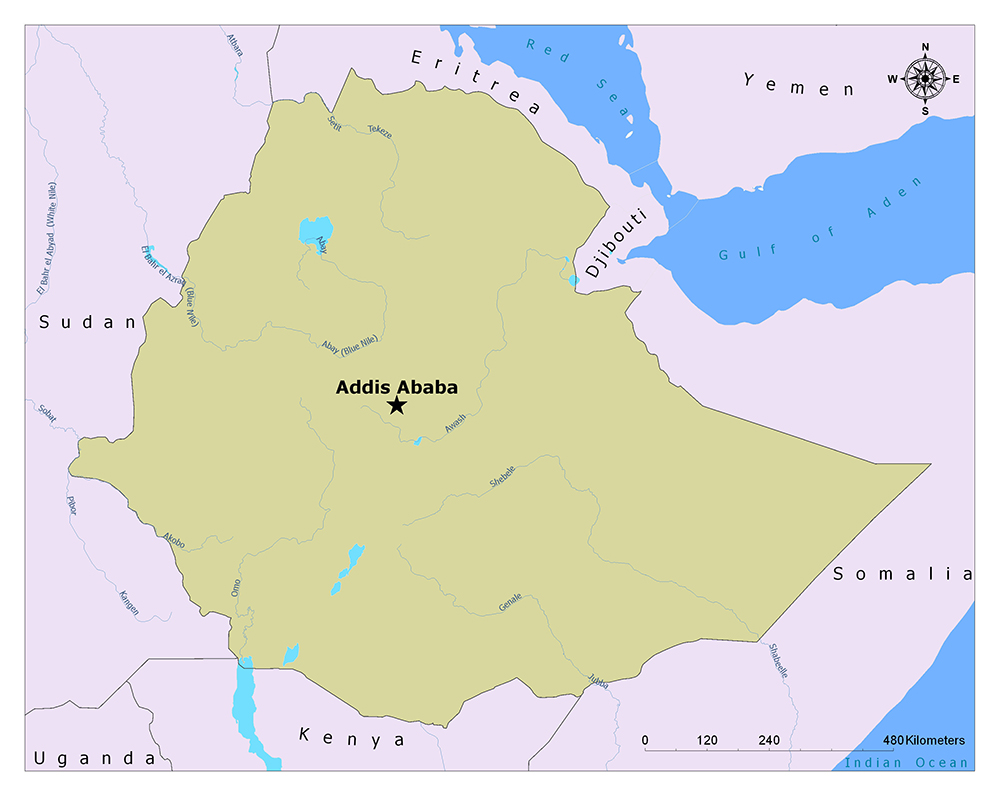
Addis Ababa is the headquarters for numerous global entities and is thus frequently designated Africa’s political hub. Despite swift urban development, the city preserves its abundant cultural legacy, exemplified by its significant landmarks.
Where is Addis Ababa?
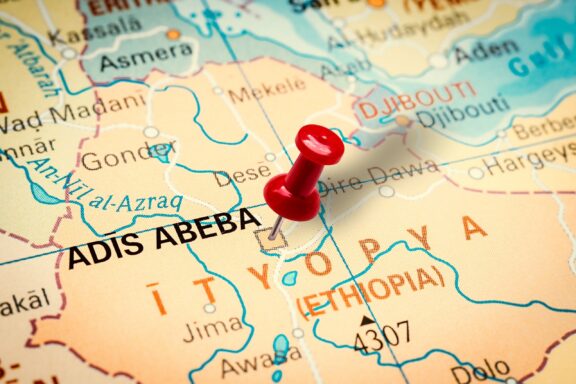
Addis Ababa is located in the central part of Ethiopia, nestled in the Ethiopian Highlands that border the eastern portion of the Great Rift Valley. It lies at a high altitude, approximately 2,400 meters or 7,900 feet above sea level.
Addis Ababa is roughly in the country’s center, surrounded by hills and mountains, with expansive views over the valleys below.
History of Addis Ababa
Addis Ababa was founded by Emperor Menelik II in 1886 and has been the capital of Ethiopia since then. It was initially chosen as a new site for the Emperor’s palace because of its pleasant climate and location within his kingdom of Shewa. The city was named Addis Ababa by Empress Taytu Betul, Menelik’s wife.
Over the years, the city expanded rapidly, and the population grew correspondingly. By the early 20th century, Addis Ababa was well on its way to becoming the largest city in the country and one the top 20 largest cities in Africa. The arrival of the railway line from Djibouti further bolstered the city’s growth.
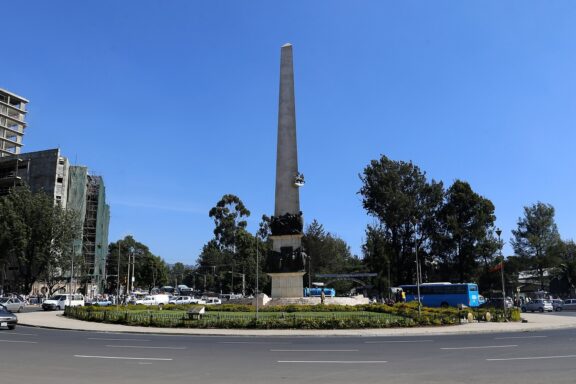
Historically, the city has witnessed some significant events. One of the most notable was when it was occupied by Italian forces from 1936 to 1941 during the Second Italo-Ethiopian War. The Italians embarked on a major infrastructure development project during this time, many remnants of which can still be seen today.
After the Second World War, Addis Ababa began to take on a more international role. In 1958, it became the headquarters of the United Nations Economic Commission for Africa (UNECA) and in 1963 of the African Union (AU), further cementing its status as the political capital of Africa.
The period of the Derg regime from 1974 to 1991 was one of the most tumultuous times in the city’s history, marked by economic hardship, political repression, and civil war. However, since the fall of the Derg, Addis Ababa has been undergoing a process of rapid development and modernization, becoming a bustling city that merges the past with the present.
Features of Addis Ababa
Addis Ababa is a vibrant city with a unique blend of traditional and modern features. Its streets are filled with Ethiopian music and dance, alongside trendy cafes, boutiques, and art galleries.
Geography and Climate
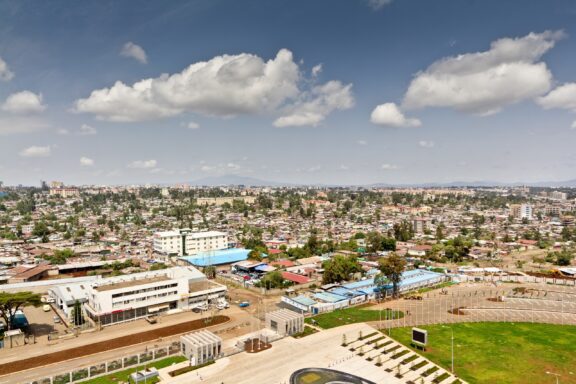
The terrain around Addis Ababa is mainly hilly, offering panoramic views of the surrounding landscape. The city is in the Awash River Basin and is dotted with several small rivers and streams.
Despite its proximity to the equator, the city’s elevation gives it a mild, temperate climate. It has a subtropical highland climate characterized by two main seasons: wet and dry. The wet season typically runs from June to September, and the dry season encompasses the rest of the year. Temperatures usually range from 12 °C (54 °F) to 25 °C (77 °F).
Population
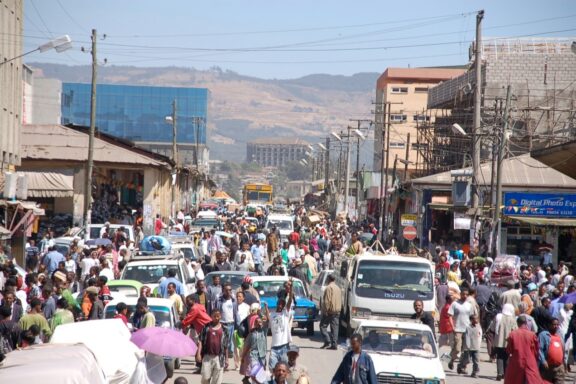
Addis Ababa’s population is over 3 million people. It’s a diverse city, home to people from different ethnic, religious, and cultural backgrounds. The largest ethnic groups are the Oromo, Amhara, and Gurage.
The city is multilingual, with Amharic being the most widely spoken language, although Oromo, Gurage, Tigrigna, and English are also commonly spoken.
Economy
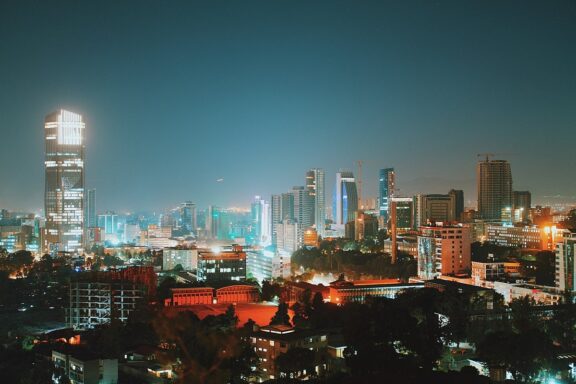
Addis Ababa serves as the economic heart of Ethiopia. It is a bustling commercial and financial junction where many local and international businesses have set up operations. Major sectors contributing to the city’s economy include manufacturing, trade, and services. The city is home to the largest market in Africa, Mercato Market, where a wide range of goods are traded daily.
Several vital industries include textile, leather, and food and beverage production. The construction industry has also seen significant growth, driven by urban development and infrastructure improvement projects.
Addis Ababa is the centerof the African Union, the United Nations Economic Commission for Africa, and numerous other regional offices for international organizations. This has spurred the growth of a substantial expatriate community and has contributed to the thriving hospitality industry.
Things to Do and Places to See in Addis Ababa
Addis Ababa offers plenty of activities and sights for exploration. Let’s delve into some of the most sought-after attractions and sites this capital city has in store.
1. Visit the National Museum of Ethiopia
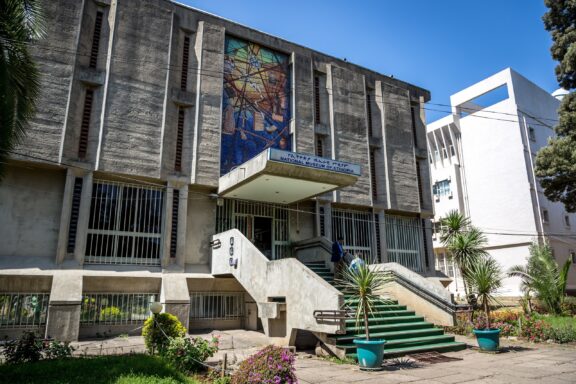
This renowned institution offers visitors a profound understanding of Ethiopia’s rich and diverse history, from its earliest days to the modern era. One of the museum’s star attractions is the fossilized hominid “Lucy,” dating back 3.2 million years.
The museum also showcases a range of archaeological and paleontological finds, traditional art, and royal items. Its collections provide a comprehensive overview of Ethiopian cultural and natural history, truly a must-see for anyone seeking to comprehend the depth of this nation’s past.
2. Shop in Mercato Market

As Africa’s largest open-air market, Mercato is a vibrant and bustling hub of economic activity. You can find almost anything, from spices to traditional clothes, handmade jewelry, electronics, and household goods.
It offers an excellent opportunity for visitors to immerse themselves in the local culture, haggle over prices, and pick up unique souvenirs. However, the market can be chaotic and prone to petty theft and pickpocketers, so visitors should watch their belongings and consider hiring a local guide.
3. Visit Holy Trinity Cathedral
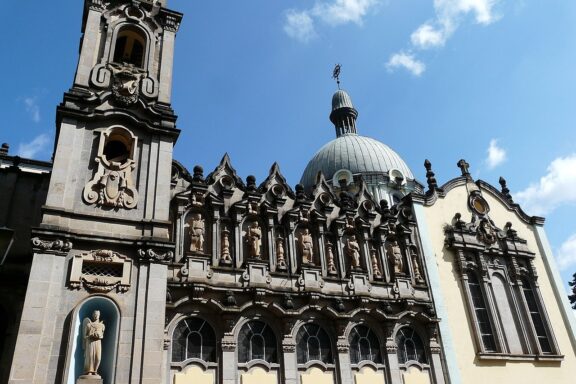
Also known as Kidist Selassie, the Holy Trinity Cathedral is an important site of worship and a stunning example of Ethiopian church architecture. Constructed in the 1940s, it’s Ethiopia’s second-most important place of worship, following St. Mary of Zion in Aksum.
he cathedral is the burial place for many members of the Ethiopian Imperial family and notable Ethiopians. Emperor Haile Selassie and his wife, Empress Menen Asfaw, are buried here. It also houses the tombs of officials who fought against the Italian invasion.
Its beautiful stained-glass windows, murals depicting biblical scenes, and richly decorated interior make it an essential stop for visitors to Addis Ababa.
4. Mount Entoto
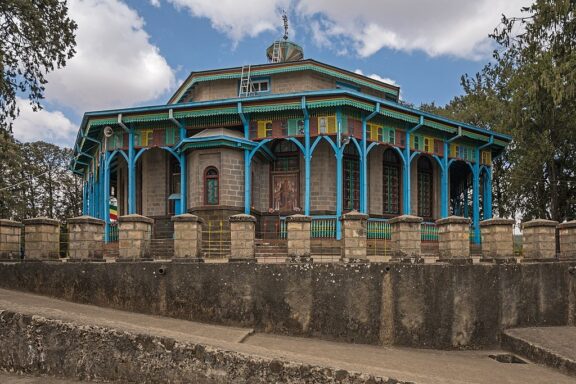
This mountain offers a refreshing escape from the city’s hustle and bustle and scenic views of Addis Ababa. Located around 3,200 meters above sea level, Mount Entoto is the highest peak overlooking the city.
At the top, you’ll find the historical Entoto Maryam Church, Menelik II’s palace, and a museum. The eucalyptus forest also surrounds the mountain, perfect for a leisurely hike or picnic.
Maryam Church’s location is significant because it’s where Emperor Menelik II was crowned the Emperor of Ethiopia in 1889. During his reign, Ethiopia’s capital was moved from Entoto to the lower plains of Addis Ababa.
5. Lion Zoo
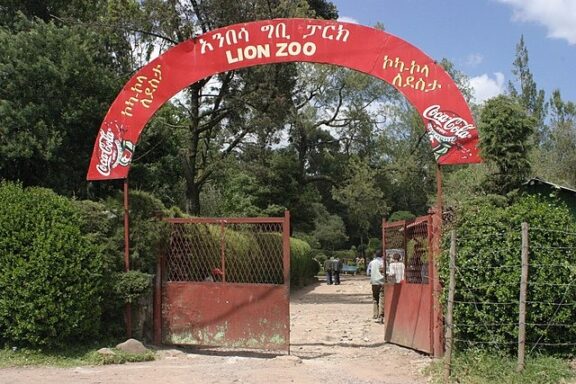
The Addis Ababa Lion Zoo is home to the rare Ethiopian lion, distinguished by its black mane. This small zoo offers visitors the chance to see these magnificent creatures up close.
These lions are a source of national pride and an emblem of Ethiopia, even appearing on local currency. While there, you can learn about conservation efforts to protect this rare subspecies of lions.
6. Unity Park
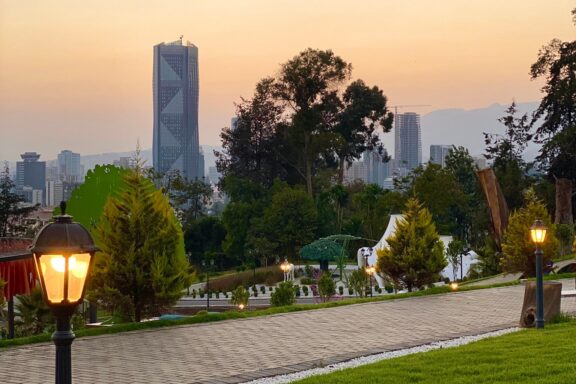
Unity Park was inaugurated in 2019 in Ethiopia’s efforts to promote unity, celebrate cultural diversity, and allow citizens and visitors to explore the country’s rich history.
Unity Park is located on the grounds of the National Palace. This park showcases Ethiopia’s cultural and historical heritage, with pavilions dedicated to the country’s various regions.
In addition to the beautifully landscaped gardens and fountains, the park includes a zoo, traditional cultural houses, art installations, and a symbol of the nations and nationalities of Ethiopia.
7. Wander around Meskel Square
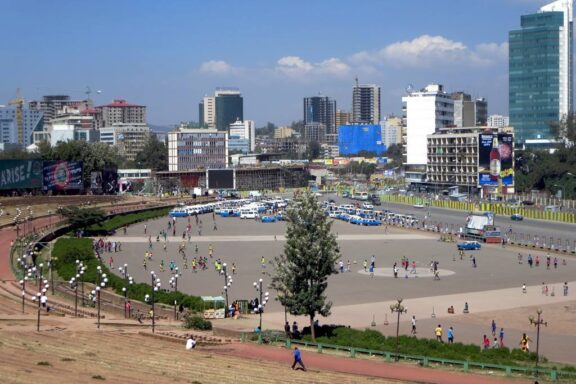
Meskel Square is a significant public city square in Addis Ababa. It is frequently used for mass gatherings, festivals, and public events.
The square is named after the Meskel Festival, one of the most important events in the Ethiopian Orthodox calendar. It’s celebrated annually in the square with a large bonfire and procession to commemorate the discovery of the True Cross by Saint Helena.
You can stroll in the area, observing the ebb and flow of city life and the various activities happening in the square. Its vastness makes it a popular spot for socializing, street vendors, sports, and even impromptu performances.
8. Suba Menagesha Park
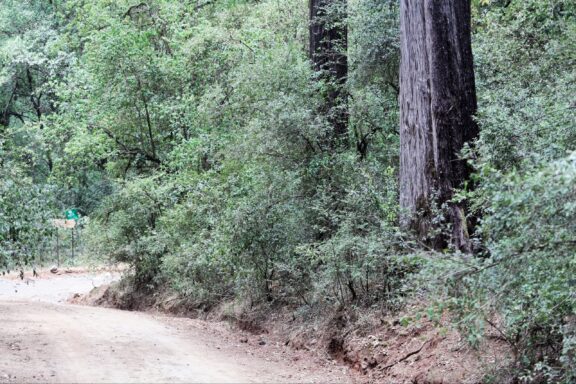
Located approximately 40km west of Addis Ababa, Suba Menagesha is one of the oldest protected forests in Africa, dating back to the 15th century. The park, rich in endemic plant species, provides hiking trails that take you through its lush forests populated with various wildlife, including monkeys, warthogs, and numerous bird species. It’s a perfect spot for nature enthusiasts, hikers, and bird watchers.
9. St. George Cathedral and Museum
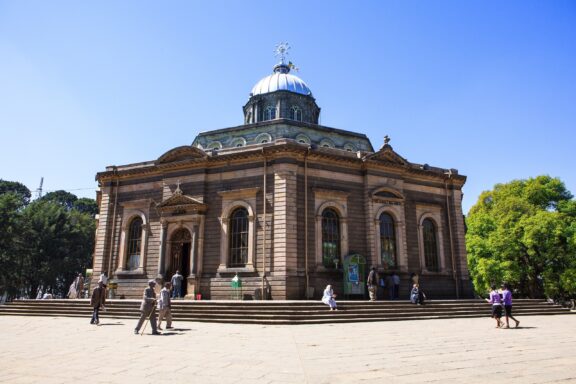
The St. George Cathedral, built in 1896 to commemorate Ethiopia’s victory over Italy, is an architectural gem. The octagonal church is beautifully adorned with murals and mosaics depicting religious and historical scenes.
The Cathedral Museum hosts an array of religious relics, royal artifacts, and ancient manuscripts. The compound also includes a monument to the patriots who lost their lives during the Italian occupation. A visit here enriches exploring Ethiopia’s Orthodox Christian tradition and national history.
Frequently Asked Questions
Is it safe to visit Addis Ababa?
Currently, Addis Ababa is generally perceived as safe for tourists. However, it’s important to note that certain regions in Ethiopia have experienced instances of violent conflict, civil unrest, crime, terrorism, and kidnapping.
Therefore, it’s advised to limit your travels to the confines of Addis Ababa and carry out your activities during daylight hours. It is also recommended to avoid walking alone at night for enhanced personal safety.
What is traditional food like in Addis Ababa?
Addis Ababa is known for traditional Ethiopian dishes like:
• Injera (a sourdough flatbread)
• Doro wat (a spicy chicken stew)
• Kitfo (a dish of seasoned raw meat)
What’s a must-try dish in Addis Ababa?
One must-try dish is Injera, served with doro wat. The sourdough flatbread in Injera pairs perfectly with the spicy, flavorful stew. It would be best if you also took advantage of the chance to try Ethiopian coffee, as Ethiopia is considered the birthplace of coffee.
When is the best time to visit Addis Ababa?
The best time to visit Addis Ababa is typically during the dry season, from October to February when the weather is warm and there’s less rain.
How can I get around in Addis Ababa?
Public transportation options include minibusses and taxis. Addis Ababa also has a light rail system, and ride-hailing apps are commonly used.
What cultural customs should I be aware of when visiting Addis Ababa?
Ethiopians value respect and hospitality. Greeting people with a handshake, nod, or bow is common. In the Ethiopian Orthodox Church, which has a significant following in Addis Ababa, removing one’s shoes before entering a church is required.
Is Addis Ababa expensive to visit?
This can depend on your travel style and preferences. While Addis Ababa can offer luxury experiences, it is generally considered affordable for travelers compared to many other capital cities. Local food and public transportation can be particularly economical. However, imported goods and high-end hotels can be relatively pricey.
Final Thoughts
Addis Ababa is a city that beautifully blends the old and the new, offering a unique window into Ethiopia’s rich history and dynamic present. There is something for everyone in this dynamic capital city, from the ancient artifacts in its museums to the vibrant rhythms of its music scene, from its bustling markets to its tranquil mountain views.
The diverse culinary delights, warm-hearted locals, and array of cultural experiences make it an enriching destination for travelers. Whether you’re an adventurer, a history buff, a foodie, or a culture enthusiast, Addis Ababa is a city worth adding to your travel itinerary.
Image Sources and Copyright Information
- image-1069: © Mappr
- Location Pin on Addis Ababa Map: © andriano.cz/Shutterstock
- Monument in City Center with Blue Sky: © Sailko/Wikimedia | CC BY 3.0 Unported
- Aerial View of Addis Ababa Cityscape: © Dereje/Shutterstock
- Bustling Street Scene with Crowd in Addis Ababa: © Sam Effron | CC BY-SA 2.0 Generic
- Addis Ababa Skyline at Night: © Hooaos/Wikimedia | CC BY-SA 4.0 International
- Exterior View of the National Museum of Ethiopia: © LMspencer/Shutterstock
- Bustling Street Market Scene: © Nick Fox/Shutterstock
- Holy Trinity Cathedral in Ethiopia: © Chuunen Baka/Wikimedia | CC BY-SA 3.0 Unported
- Traditional Ethiopian Church Building: © A.Savin/Wikimedia | FAL Free Art License 1.3
- Lion Zoo Entrance Archway: © Sakari A. Maaranen/Wikimedia | CC BY 3.0 Unported
- Sunset View of City Park with Skyscrapers in the Background: © ምቅ37382/Wikimedia | CC BY-SA 4.0 International
- Meskel Square in Addis Ababa: © David Stanley/Wikimedia | CC BY 2.0 Generic
- Dirt Road in a Lush Green Forest: © ChWeiss/Shutterstock
- St. George Cathedral in Addis Ababa: © Anya Newrcha/Shutterstock